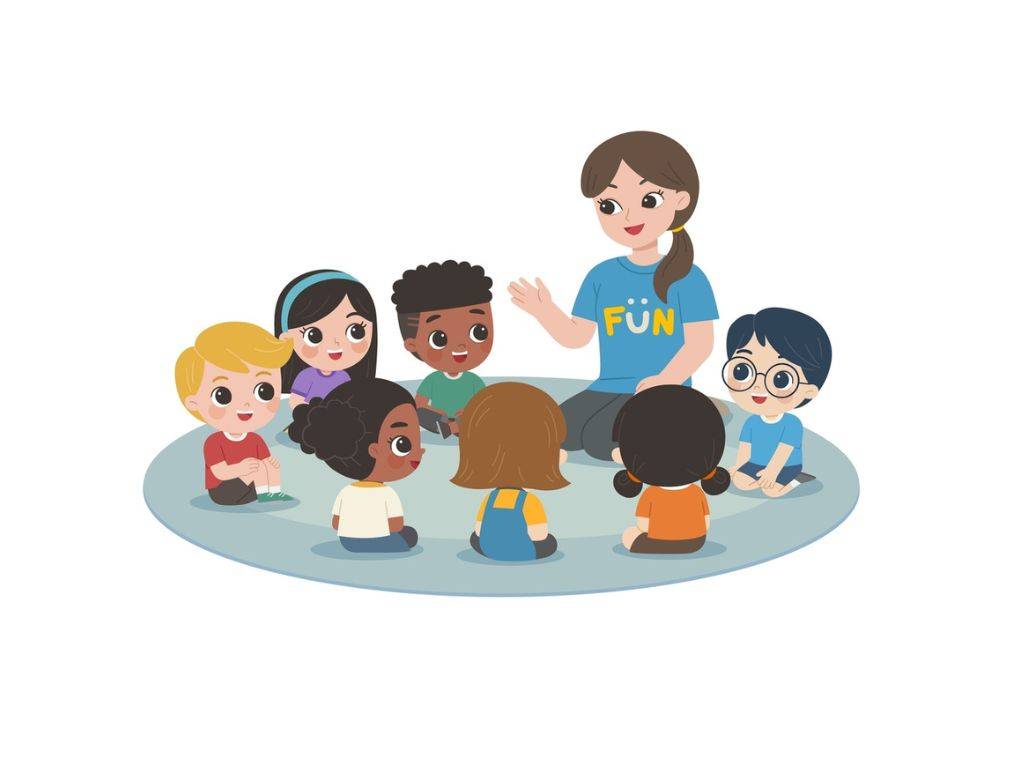There are four practical activities to develop listening skills: the “Repeat Back” Activity, the Storytelling Game, the One-Minute Listening Challenge, and the Sound Map Exercise. Each activity has its own unique approach and benefits, and the best activity for improving listening skills will depend on your specific goals and context.
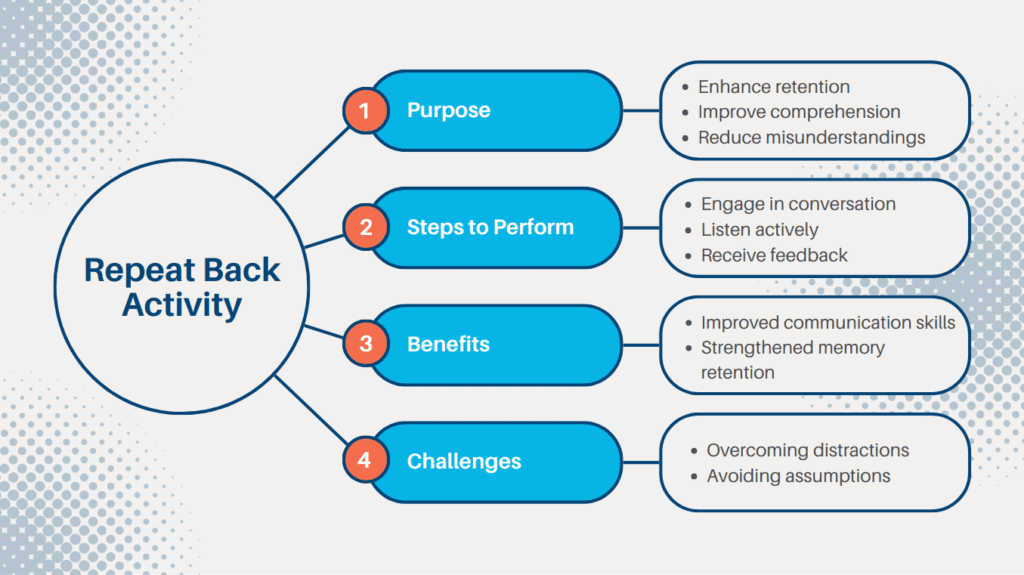
1. The “Repeat Back” Activity
This activity sharpens your listening and retention skills by requiring you to repeat back what the other person has said. It helps ensure that you’ve fully grasped the message.
Also Read: What is Listening Skills? – Tips for Improvement
How to Do It:
- Have a conversation with a friend or colleague.
- As the person talks, focus intently on what they’re saying.
- Once they finish speaking, summarize or repeat back what they’ve said, using your own words. For example, “So what you’re saying is…”
- Ask them to confirm if you got it right. If not, listen again and adjust your response until it matches their meaning.
This exercise works in both casual and formal conversations and ensures you’re not just hearing but actively understanding the person’s message.
Also Read: How to Be a Better Listener as a Student
The “Repeat Back” method engages both your short-term memory and listening comprehension. It prevents misunderstandings by forcing you to confirm what you’ve heard, making communication clearer.
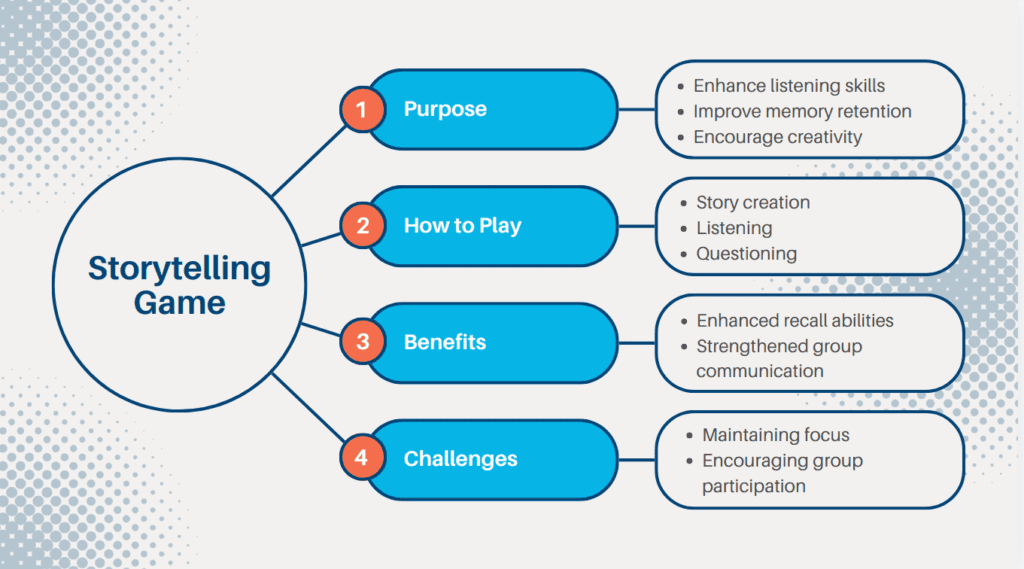
2. Storytelling Game
This game involves one person telling a story while others listen for specific details. It challenges listeners to focus on key points and recall small details.
Also Read: Common Barriers for Effective Listening
How to Do It:
- One person starts by telling a short story (it could be something that happened to them or a made-up scenario).
- After the story is finished, the listeners must answer detailed questions about it, such as “What color was the car?” or “What was the main character’s name?”
- To increase the difficulty, introduce more complex stories or ask harder questions about small, less obvious details.
This activity can be played in small groups, with family, or even in a classroom or workplace setting. One institution that has hands-on skills on these activities is Dr. Kishore’s Ratnam Schools.
The storytelling game enhances your ability to retain detailed information, which is crucial for active listening. It trains your brain to focus on all aspects of a conversation, not just the main points.
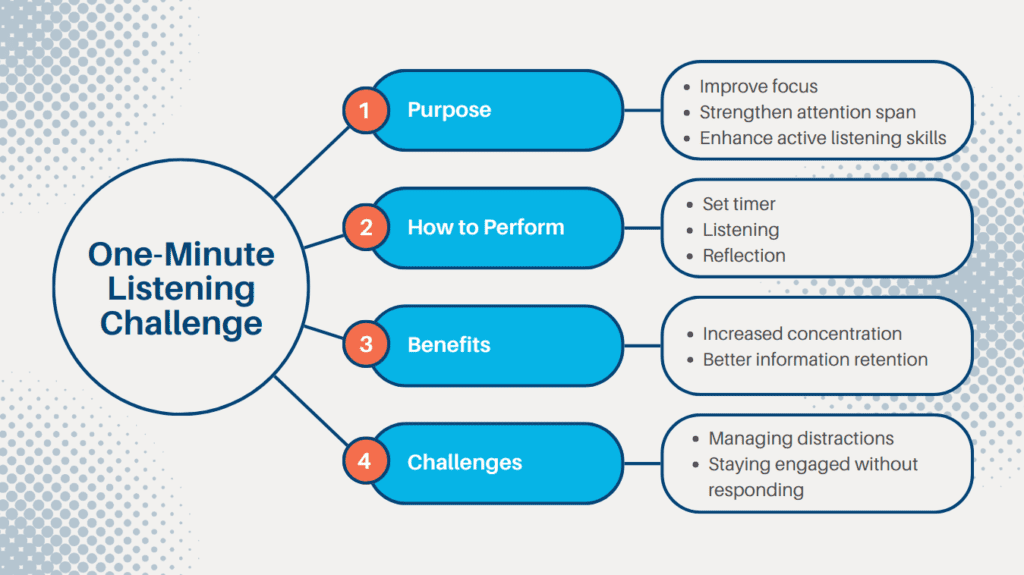
3. One-Minute Listening Challenge
In this challenge, you’ll focus on listening to someone speak for just one minute without any distractions, interruptions, or preparation for a response.
Also Read: How to Improve Reading Skills: 7 Reading Activities to Try
How to Do It:
- Set a timer for one minute.
- Ask someone to speak about any topic of their choice for that duration. Your job is to listen without saying a word or reacting until the minute is up.
- After the timer goes off, share one key takeaway or insight you gathered from the speaker. You should also ask a question based on what you heard to show your engagement.
If you’re alone, you can use a podcast or a short speech for this activity and jot down your thoughts afterward.
The one-minute listening challenge forces you to focus intensely for a short period, which helps strengthen your attention span. It’s perfect for improving concentration and learning to listen without getting distracted.
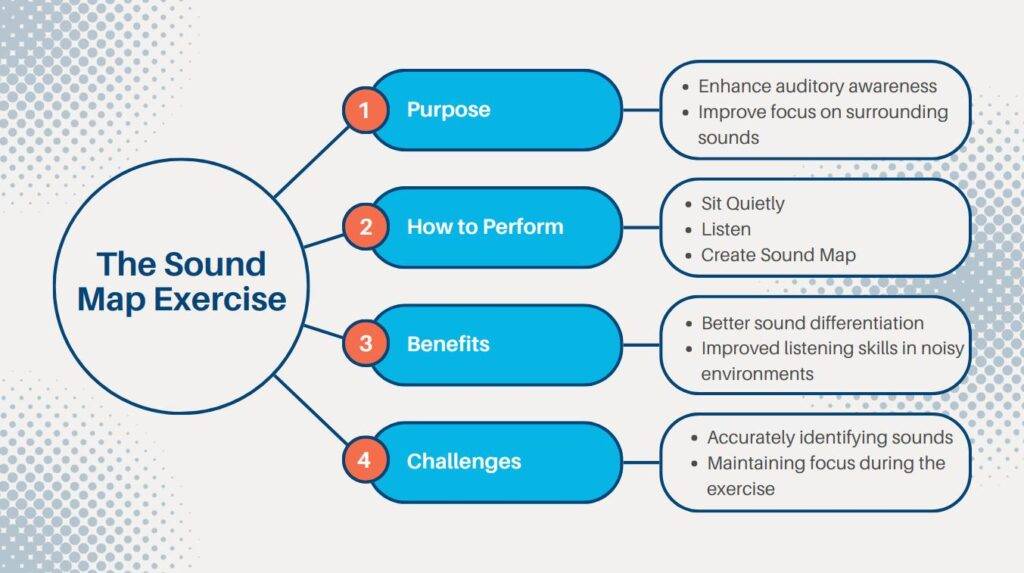
4. The Sound Map Exercise
The Sound Map exercise encourages you to tune into your environment by focusing on and identifying various sounds. This builds your auditory awareness and sharpens your ability to filter and prioritize sounds in conversations.
Also Read: Best Life Skills Activities for Students & Kids
How to Do It:
- Sit quietly with a notebook and pen in a park, at home, or any other place with background noise.
- Close your eyes and listen to the surrounding sounds for 2-5 minutes.
- As you listen, make a “sound map” by jotting down every sound you hear and where it seems to come from (e.g., “dog barking to the left,” “car honking in the distance”).
- After the time is up, review your notes and see how many sounds you captured. With practice, you’ll notice more and more subtle sounds over time.
This activity helps improve your focus and ability to process multiple sounds at once, which is crucial when listening in noisy environments. It also makes you more mindful and present in conversations.
Also Read: Qualities & Characteristics of a Good Student
Conclusion: Listening Takes Practice, But Anyone Can Improve
Listening isn’t just about hearing words—it’s about fully engaging with the person or sounds around you. These four activities can help you develop better listening habits and strengthen your overall communication skills. Whether it’s through summarizing what you hear, recalling details from stories, or focusing intently for short bursts, practicing these activities will enhance your ability to listen actively and attentively. However, if you are not able to cope up with the perfect ambience to perform these listening activities then you must connect with the experts – Dr. Kishore’s Ratnam Schools!


